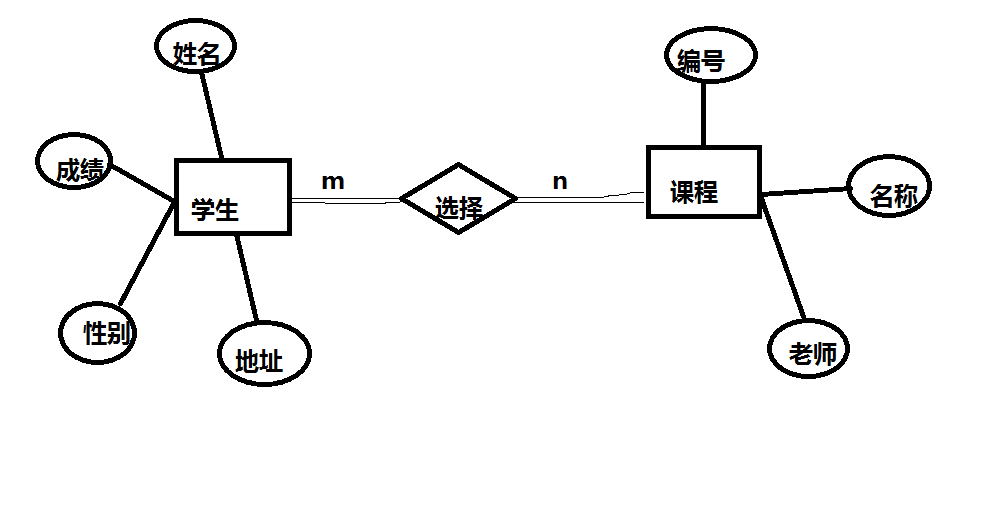Python全栈 MySQL 数据库 (引擎、事物、pymysql模块、orm)
ParisGabriel
每天坚持手写 一天一篇 决定坚持几年 为了梦想为了信仰
 开局一张图
开局一张图存储引擎(处理表的处理器)
基本操作:
查看所有存储引擎
show engines;
查看已有表的存储引擎
show create table 表名;
创建表指定引擎
create table 表名()engine=myisam;
已有表添加引擎
alter table 表名 engine=innodb;
MySQL锁:(自动加锁)
目的:解决客户端并发访问的冲突问题
锁分类:
类型:
1.读锁(共享锁)
select :加读锁后别人不能更改表记录,但可以查询
2.写锁(互次锁、排他锁)
insert、delete、update
加写锁后别人不能查也不能改
锁粒度:
1.表级锁:myisam
1.行级锁:innodb
常用的存储引擎特点
InnoDB特点:
1.共享表空间
表名.frm:表结构和索引文件
表名.idb:表记录、
支持行级锁
支持外键、事物操作
Myisam特点:
独享表空间
表名.frm:表结构
表名.myd:表记录mydata
表名.myi:索引文件 myindex
支持表级锁
如何决定使用哪个存储引擎?
执行查询操作多的表用MyISAM(使用InoDB浪费资源)
执行写操作多的表用InnoDB
MySQL调优:
1.选择合适的存储引擎
读操作多:MyISAM
写操作多:InnoDB
2.创建索引
在select、where、order by 经常涉及到的字段建立索引
3.SQL语句优化
1).where子句中尽量不使用 != 否则放弃索引全表扫描
2).尽量避免 NULL 值判断 否则放弃索引全表扫描
优化前:
select number from t1 where number isnull;
优化后:
在number列上设置默认值0,确保number列无NULL值
select number from t1 where number=0;
3).尽量避免 or 连接条件,否则放弃索引全表扫描
优化前:
select id from t1 where id=0 or id=20;
优化后:
select id from t1 where id=10
union all
select id from t1 where id=20
union all
select id from t1 where id=30;
union all:
将查询结果连接起来
4).模糊查询尽量避免使用前置%,否者全表扫描
select name from t1 where name like “%c%”;
5).尽量避免使用 in 和 not in 否则全表扫描
优化前:
select id from t1 where id in(1,2,3,4);
优化后:
select id from t1 where id between 1 and 4;
6).尽量避免使用* 不要返回任何用不到的字段
事物和事物回滚
定义:一件事从开始发生到结束的整个过程
作用:确保数据的一致性
事物和事物回滚应用
MySQL中SQL命令会自动commit到数据库
show variables like“autocommit”
事物应用:
开始事物
begin;此时autocommit被禁用
事物提交
commit
终止事物
rollback;
与python交互:
交互类型
python3:pymysql 模块
安装:
在线:sudo pip3 install pymysql
离线:pymysql-0.7.11.tar.gz
tar -zxvf pymysql-0.7.11.tar.gz
cd pymysql-0.7.11
sudo python3 setup.py install
python2: 模块:MySQLdb
安装:sudo pip install mysql-python
pymysql使用流程:
1.建立数据库链接:(db = pymysql.connect(....))
2.创建游标对象:(c = db.cursor())
3.游标方法:(c.execute(“insert .....”))
4.提交到数据库:db.commit()
5.关闭游标对象:c.close()
6.断开数据库链接:db.close()
connect对象:
db = pymysql.connect(参数列表)
1.host:主机地址,本地 localhost
2.port:端口,默认3306,8080(可省略)
3.user:用户名
4.password:密码
5.database:库
6.charset:编码方式,推荐使用utf8
数据库链接对象(db)的方法:
1.db.close() 关闭链接
2.db.commit()提交到数据库
3.db.rollback()回滚
4.cur = db.cursor()返回游标对象,用于执行具体SQL命名
游标对象(cur)的方法:
1.cur.execute(SQL命令,[列表])执行SQL命令
2.cur.close()关闭游标对象
3.cur.fetchone()获取查询结果的第一条数据
4.cur.fetchmany(n)获取n条记录
5.cur.fetchall()获取所有记录
示例:
增、删、改、查、参数化
# frist.py import pymysql # 创建数据库对象 db = pymysql.connect(host="localhost", user="root", password="123456", database="db4", charset="utf8") # 利用db方法创建游标对象 cur = db.cursor() # 利用游标对象的execute()方法执行SQL命令 cur.execute("insert into sheng values\ (16,300000,'台湾省');") # 提交到数据库 db.commit() # 关闭游标对象 cur.close() # 断开数据库链接 db.close() # 增 删 改 import pymysql # 创建数据库链接 # 链接到db4库 db = pymysql.connect(host="localhost", user="root", password="123456", database="db4", charset="utf8") # 创建游标 cur = db.cursor() try: # 添加记录 cur.execute("insert into sheng values (17,168800,'浙江');") # 修改记录 cur.execute("update sheng set id=666 where id=17;") # 删除记录 cur.execute("delete from sheng where s_name='浙江';") # 截获EXception类型错误 except Exception as e: # 出现异常后回滚 db.rollback() # 输出错误 print("Error ", e) else: # 提交数据 db.commit() # 关闭游标 cur.close() # 断开数据库链接 db.close() # 查询 import pymysql # 创建数据库链接 db = pymysql.connect(host="localhost", user="root", password="123456", database="db4", charset="utf8") # 创建游标 cur = db.cursor() try: # 查找 cur.execute("select * from sheng;") # 取出一条记录就少一条 print("***************************") data1 = cur.fetchone() print(data1) print("***************************") data2 = cur.fetchmany(3) for i in data2: print(i) print("***************************") # 遍历取出数据 data3 = cur.fetchall() for x in data3: print(x) # 提交数据 db.commit() except Exception as e: db.rollback() print("Error ", e) # 关闭游标 cur.close() # 断开数据库链接 db.close() # 参数化 import pymysql # 创建数据库链接 db = pymysql.connect(host="localhost", user="root", password="123456", database="db4", charset="utf8") # 创建游标 cur = db.cursor() try: s_id = input("请输入省的编号") s_name = input("请输入省的名字") # 用占位符参数化数据 sql_insert = "insert into sheng(s_id,s_name) values(%s,%s)" # execute方法 传参必须是列表 cur.execute(sql_insert, [s_id, s_name]) # 提交数据 db.commit() except Exception as e: db.rollback() print("Error ", e) # 关闭游标 cur.close() # 断开数据库链接 db.close()
封装类
# mysqlpython.py # 导入mysql模块 from pymysql import * class MysqlPython: def __init__(self, database, # 库 host="127.0.0.1", # ip地址 user="root", # 用户名 password="123456", # 密码 port=3306, # 端口 charset="utf8"): # 字符集 self.host = host self.database = database self.user = user self.password = password self.port = port self.charset = charset def open(self): # 创建数据库链接函数 self.db = connect(host=self.host, database=self.database, user=self.user, password=self.password, port=self.port, charset=self.charset) self.cur = self.db.cursor() # 创建游标对象 def close(self): # 创建断开数据库链接 关闭游标函数 self.cur.close() self.db.close() def zhixing(self, sql, L=[]): # 创建pymysql.execute() 方法函数 try: self.open() # 链接数据库 self.cur.execute(sql, L) # 参数化执行SQL命令 self.db.commit() # 提交数据 print("ok") except Exception as e: self.db.rollback() # 出错取消提交 print("Failed", e) self.close() # 断开数据库链接 关闭游标 def all(self, sql, L=[]): try: self.open() self.cur.execute(sql, L) result = self.cur.fetchall() return result except Exception as e: print("Failed", e) self.close()
# frist.py from mysqlpython import MysqlPython # 创建数据库链接 sqlh = MysqlPython("db4") # 创建数据库对象 sql_update = "update sheng set s_name='辽宁省'\ where s_name='云南省';" # 调用xiugai函数 执行SQL命令:sql_update sqlh.zhixing(sql_update) sql_select = "select * from sheng where id=%s;" # 调用all函数 执行SQL命令:sql_select date = sqlh.all(sql_select, [1]) print(date)
用户登录系统示例:
from mysqlpython import Mysqlpython from hashlib import sha1 uname = input("请输入用户名:") pwd = input("请输入密码:") # 用sha1给pwd加密 s1 = sha1() # 创建sha1加密对象 s1.update(pwd.encode("utf8")) # 指定编码 pwd2 = s1.hexdigest() # 返回16进制加密结果 sqlh = Mysqlpython("db4") select = "select password from user where \ username=%s;" result = sqlh.all(select, [uname]) # print(result) # (('7c4a8d09ca3762af61e59520943dc26494f8941b',),) if len(result) == 0: print("用户名不存在") elif result[0][0] == pwd2: print("登录成功") else: print("密码错误")
orm(Object Relation Mapping)对象关系映射
1.定义
把对象模型映射到MySQL数据库中
2、sqlalchemy安装:
在线 :sudo pip3 install sqlalchemy
离线 :
$ tar -zxvf SQLAlchemy-1.2.10.tar.gz
$ cd SQLAlchemy-1.2.10
$ sudo python3 setup.py install
验证:
$ python3
>>> import sqlalchemy
>>>

orm
# 创建一张表 # 连接数据库的模块 from sqlalchemy import create_engine from sqlalchemy.ext.declarative import declarative_base from sqlalchemy import Column, Integer, String engine = create_engine("mysql+pymysql://root:123456@localhost/db4", encoding="utf8") Base = declarative_base() # orm基类 class User(Base): # 继承Base基类 __tablename__ = "t123" id = Column(Integer, primary_key=True) name = Column(String(20)) address = Column(String(40)) Base.metadata.create_all(engine)
ER模型:
定义: 关系模型 用于数据库设计
三个概念
1.实体:矩形框
2.属性:椭圆形
3.椭圆形:实体之间的关系
1).一对一关系(1:1)
2).一对多关系(1:n)
3).多对多关系(m,n)





